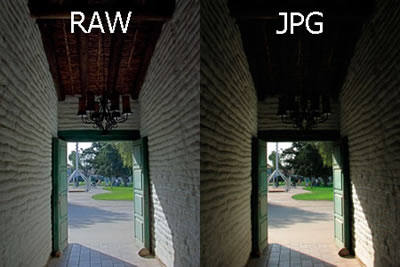There are some key differences between a GIF, RAW, JPG, PNG, DNG, and TIFF. A GIF stands for Graphics Interchange Format which shows animated moving images in one picture (not videos by the way). GIFs are also very compressed in data making them not recommended for photos. RAW files are high quality images with a ton of shades for colors and better representation of contrast, exposure, white exposure, and more. RAW files are high quality because they are taken directly from the camera's sensor. The downside to RAW files are that only a small amount of images can be saved in a memory card because of the humongous amount of data in a RAW file. Also, RAW files have no widespread adoption making people use specialized programs like dcraw to open RAW files. JPG or JPEG images stand for Joint Photographic Expert Group which are commonly used in digital cameras in default mode and are commonly used in for hard prints or online. The compression ratio is adjustable in a JPG/JPEG photo so that the level of quality is adjustable for the person. JPG/JPEG image files are flattened making editing the photo a hassle because the image degrades every time you edit the photo making the quality of the photo worse every edit. PNG images stand for Portable Network Graphics. PNG images are one of the most popular formats used by graphic designers and photographers because of the lossless data compression that is able to save the information gathered from the PNG image file. PNG images allows for transparency options which allows for more edits onto the PNG image. PNG images are bigger than JPG/JPEG images but smaller compared to GIF images in data compression size. PNG images can also be shared on the web. DNG images or Digital Negative images are similar to RAW but stores data in a generic and compatible format. DNG images are used in Adobe but can be used, convert, or read by any other software. RAW files can be converted to DNG images making the file size 15% to 20% smaller without loss in quality. Also, the DNG format has a checksum information that is used to scan and prevent file corruption. Lastly, TIFF images stand for Tagged Image File Format which is popular among graphic artists, publishers, and photographers. TIFF images retain information in layers depending on how you save the file. TIFF images are supported by a numerous amount of applications like Adobe Photoshop, Google Nik, and Lightroom. TIFF image files are incredibly large like RAW files and cannot be uploaded to the internet. TIFF images can be printed without loss in quality too.
A comparison of a RAW and a JPG/JPEG

A PNG image
A JPG/JPEG image
A DNG image comparison

TIFF images unavailable....😞
GIFF images:







No comments:
Post a Comment